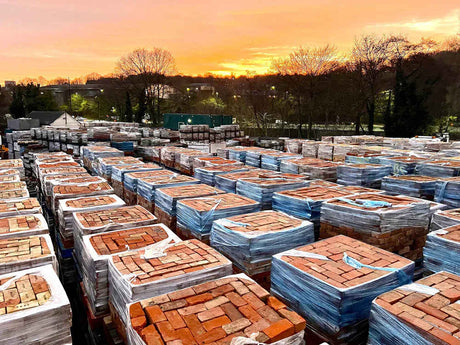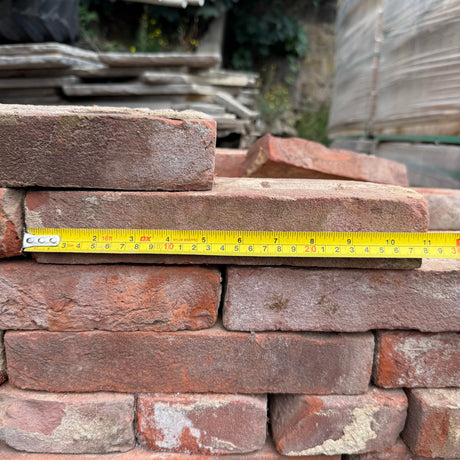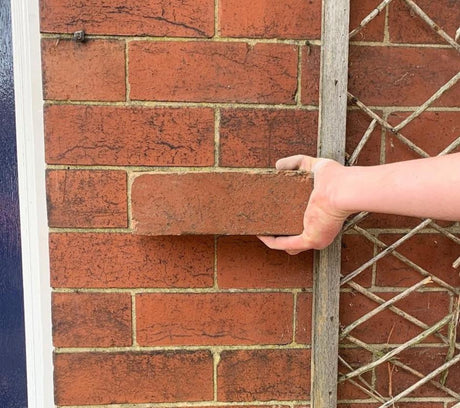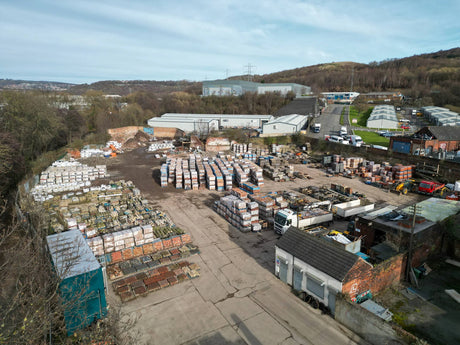Your Complete Guide to Quarry Tiles: Unveiling the Timeless Beauty
Quarry tiles, known for their natural beauty and robustness, have been a popular choice in floor tiles for centuries. Their rich history, stemming from the deep quarries where they are sourced, adds a unique character to any space. In this section, we delve into the origins of quarry tiles, their enduring charm, and why they remain a top choice for homeowners and designers alike.
The Timeless Charm of Quarry Tiles
Quarry tiles have stood the test of time, not just in durability but also in style. This section explores the unique appeal of quarry tiles, how they have evolved over time, and their role in contemporary interior design.
Quarry Tiles: Definition and History
Quarry tiles are a type of hard-wearing, unglazed tile made from ground minerals similar to bricks. They are known for their durability, thickness, and natural beauty. These tiles are typically found in natural earthy shades, primarily reds and browns, due to the clay and shale from which they are made. Their robustness and slip resistance make them ideal for high-traffic areas and outdoor applications.
The history of
quarry tiles can be traced back to ancient times. They have been used throughout history in various civilisations, including the Romans and Egyptians. Originally, these tiles were made by hand, shaped from natural clay and then fired in a kiln. This process allowed for slight variations in size and color, giving each tile a unique, rustic appearance. Over time, the production of quarry tiles became more industrialized, leading to more uniform shapes and sizes, but they still retained their characteristic durability and natural aesthetic.
In the 19th century, with the advent of the industrial revolution, quarry tile manufacturing underwent significant transformations. The introduction of machinery and new firing techniques allowed for mass production of these tiles, making them more accessible and affordable for wider use. This period saw an increase in their popularity, especially in public buildings, commercial kitchens, and outdoor spaces due to their low maintenance and long-lasting nature.
Today, quarry tiles are still valued for their natural beauty and resilience. Modern technology has enabled the production of these
tiles in a variety of shapes, sizes, and even more colours, broadening their use in both residential and commercial settings. Despite these advancements, the essence of quarry tiles remains the same: a durable, natural flooring option with a rich history.
Your Complete Guide to Quarry Tiles
This section is the heart of our guide, providing an in-depth look at how quarry tiles can be integrated into various architectural styles. We will cover design tips, colour coordination, and how to make the most of these versatile tiles in different settings.
Quarry
tiles offer a blend of durability, aesthetics, and versatility. They are an excellent choice for those looking to add a touch of timeless elegance to their space. Whether for a classic look or a modern twist, quarry tiles provide a solid foundation for any design dream.
Types and Features of Quarry Tiles
Quarry tiles are renowned for their practicality and natural aesthetic, making them a popular choice for both residential and commercial spaces. These tiles come in various types, each with unique features and applications.
1. Traditional Red Quarry Tiles: The most classic and recognisable type, these tiles are known for their deep red colour. They are often used in outdoor settings, like patios and walkways, as well as in commercial kitchens due to their slip-resistant nature and ability to withstand heavy foot traffic.
2. Unglazed Quarry Tiles: These tiles retain the natural finish of the clay, offering a more rustic and earthy appearance. They are highly durable and resistant to stains and spills, making them ideal for areas that require regular, heavy cleaning.
3. Glazed Quarry Tiles: Offering a protective layer on top of the clay, glazed quarry tiles are available in a wider range of colours and patterns. This type is less porous and even easier to clean, suitable for indoor environments like bathrooms and kitchens.
4. Flashed Quarry Tiles: These are made by blending clays with different colours and firing them at high temperatures. The process creates a unique, variegated coloration on each tile, adding a distinctive character to floors and walls.
5. Abrasive Quarry Tiles: Embedded with a grit surface, these tiles are specifically designed to provide extra slip resistance. They are ideal for commercial and industrial applications where safety is a paramount concern.
6. Textured Quarry Tiles: These feature a slightly rough surface, enhancing their slip-resistant qualities. They are perfect for outdoor areas or places with a high risk of wet conditions.
Features of Quarry Tiles
-
Durability: Quarry tiles are known for their strength and longevity. They can handle heavy foot traffic and are resistant to most chips and scratches.
-
Natural Look: These tiles have an earthy, natural appearance, with colour variations that add to their charm.
-
Low Maintenance: Quarry tiles are easy to clean and maintain. They are resistant to stains, spills, and don't require frequent sealing.
-
Eco-Friendly: Being made from natural clay, they are an environmentally friendly flooring option.
-
Heat Resistance: These tiles can withstand high temperatures, making them suitable for fireplaces and outdoor grills.
-
Affordability: Compared to some other flooring options, quarry tiles offer a cost-effective solution, especially considering their durability and lifespan.
Quarry tiles, with their diverse types and beneficial features, offer both aesthetic appeal and practicality, making them a versatile choice for a variety of settings.
Installation and Preparation of Quarry Tiles
Installing quarry tiles requires meticulous preparation to ensure a long-lasting and visually appealing finish. The process begins with ensuring that the surface where the tiles will be laid is clean, level, and dry. Any existing flooring must be removed, and the substrate should be checked for cracks or unevenness. If necessary, a self-leveling compound can be used to create a smooth base. Moisture tests are crucial, especially for concrete floors, to prevent any future issues related to dampness affecting the tiles.
Essential Tools and Materials for Laying Quarry Tiles
To lay quarry tiles, you'll need specific tools and materials. Key items include a notched trowel for applying adhesive, tile spacers for maintaining even gaps, a tile cutter for shaping tiles, and a level to ensure evenness. Materials required include the quarry tiles themselves, tile adhesive suitable for heavy tiles, and grout. A sealant may also be necessary, particularly for unglazed quarry tiles.
Step-by-Step Installation Process
The installation of quarry tiles involves several steps. First, layout your tiles to plan the design and identify any necessary cuts. Apply adhesive with a notched trowel, laying tiles carefully and using spacers to maintain uniform gaps. After the adhesive sets, apply grout to fill the gaps, wiping away excess with a damp sponge. Finally, seal the tiles if needed to enhance durability and resistance to stains.
Design and Aesthetics
Quarry tiles offer a unique aesthetic appeal, characterized by their natural, earthy tones and robust texture. They lend a timeless, rustic charm to any space and can be arranged in various patterns to create different visual effects. Their simplicity makes them versatile, allowing them to complement both traditional and contemporary design schemes.
Incorporating Quarry Tiles in Modern Interiors
Quarry tiles can be seamlessly integrated into modern interiors, providing a contrast of texture and a touch of natural beauty. Their durability makes them suitable for high-traffic areas like kitchens and hallways. Modern design often plays with contrasts, and the rustic look of quarry tiles can strikingly offset more contemporary elements like stainless steel or glass.
Colour Schemes and Patterns with Quarry Tiles
The natural hues of quarry tiles range from deep reds to browns and grays, offering a variety of colour schemes to work with. They can be laid in simple grid patterns, diagonally for a diamond effect, or in more complex layouts like herringbone. Mixing different shades can create an intriguing mosaic effect, adding visual interest to floors or walls.
Maintenance and Care of Quarry Tiles
Quarry tiles are low maintenance, requiring only regular cleaning to keep them looking their best. They are highly durable and resistant to stains, but sealing them, particularly if they are unglazed, can provide additional protection and make them even easier to clean.
Daily and Routine Care for Quarry Tiles
For daily maintenance, sweeping or vacuuming is sufficient to remove dirt and debris. Mopping with a mild detergent and water is recommended for a deeper clean. Avoid using harsh chemicals or abrasive cleaners, as these can damage the tiles.
Addressing Common Issues with Quarry Tiles
Common issues with quarry tiles include staining, chipping, or loosening. Stains can often be removed with a suitable cleaner, while chips might require individual tiles to be replaced. If tiles become loose, it may be necessary to reapply adhesive and reset them.
Durability and Longevity
Quarry tiles are celebrated for their durability and longevity. They are extremely hard-wearing, making them ideal for high-traffic areas. With proper installation and maintenance, quarry tiles can last for decades, resisting wear and tear remarkably well.
Lifespan and Durability of Quarry Tiles
The lifespan of quarry tiles can extend well beyond 50 years when properly installed and maintained. Their natural composition and robustness make them resistant to most forms of damage, including scratches, chips, and wear from foot traffic.
When to Replace or Refurbish Quarry Tiles
Quarry tiles may need to be replaced if they are extensively damaged or if the design becomes outdated. However, they can often be refurbished instead of replaced, through deep cleaning, resealing, or even refinishing to restore their original appearance.
Eco-Friendly Aspects
Quarry tiles are an environmentally friendly option in flooring. Made from natural materials, they do not emit volatile organic compounds (VOCs) and can be recycled. Their long lifespan also means less frequent replacement, reducing waste.
Quarry Tiles and Environmental Sustainability
Quarry tiles contribute to sustainable building practices. Their natural composition and production process have a lower environmental impact compared to synthetic flooring options. Additionally, their durability reduces the need for frequent replacements, contributing to less waste.
Recycling and Reusing Quarry Tiles
Quarry tiles can be recycled or reused in various ways. Old tiles can be repurposed for outdoor projects like pathways or as decorative elements in gardens. They can also be crushed and used in construction aggregates, further extending their lifecycle.
Cost Analysis and Budgeting
The cost of quarry tile projects varies depending on the quality of tiles, the complexity of the installation, and the size of the area. It's important to consider not just the upfront cost of the tiles, but also the installation costs, including preparation, adhesive, and grout.
Estimating Costs for Quarry Tile Projects
To estimate costs, calculate the total square footage needed, factoring in extra for cuts and breakage. Then, add the cost of materials like adhesive and grout, as well as any tools you may need to purchase or rent. Labor costs will also be a significant part of the budget if you are not installing them yourself.
Budgeting Tips for Quarry Tile Installation
When budgeting for quarry tile installation, always allocate extra funds for unexpected expenses. Choose tiles that offer a balance between quality and cost. Consider doing some of the preparation work yourself to save on labour costs.
Your Complete Guide to Quarry Tiles
This complete guide to quarry tiles covers everything from selection, installation, and maintenance to design ideas and cost considerations. Understanding these aspects helps in making informed decisions and ensures the successful integration of quarry
FAQs
-
What are the best ways to maintain quarry tiles? Quarry tiles are known for their durability and easy maintenance. The best ways to maintain them include regular sweeping or vacuuming to remove dirt and debris. For deeper cleaning, use a mild detergent or a pH-neutral cleaner mixed with warm water. Avoid acidic or abrasive cleaners as they can damage the tile surface. Sealing the tiles can also protect them from stains and make cleaning easier.
-
Can quarry tiles be used in outdoor settings? Yes, quarry tiles are an excellent choice for outdoor settings due to their natural durability and resistance to weather elements. They are ideal for patios, walkways, and outdoor living areas. However, it is important to choose quarry tiles that are rated for outdoor use and ensure proper installation to avoid moisture penetration and frost damage.
-
How do quarry tiles contribute to a home's value? Installing quarry tiles can enhance a home's value by adding aesthetic appeal and long-lasting quality. Their timeless look, coupled with the ability to withstand heavy foot traffic and resist water damage, makes them a desirable feature for potential buyers. Additionally, their low maintenance requirements are an added value for homeowners.
-
Are there eco-friendly options for quarry tiles? Yes, there are eco-friendly options for quarry tiles. Many manufacturers now produce quarry tiles using sustainable practices, such as recycling materials and reducing energy consumption during production. Additionally, the natural durability of quarry tiles means they don't need to be replaced often, reducing waste over time.













